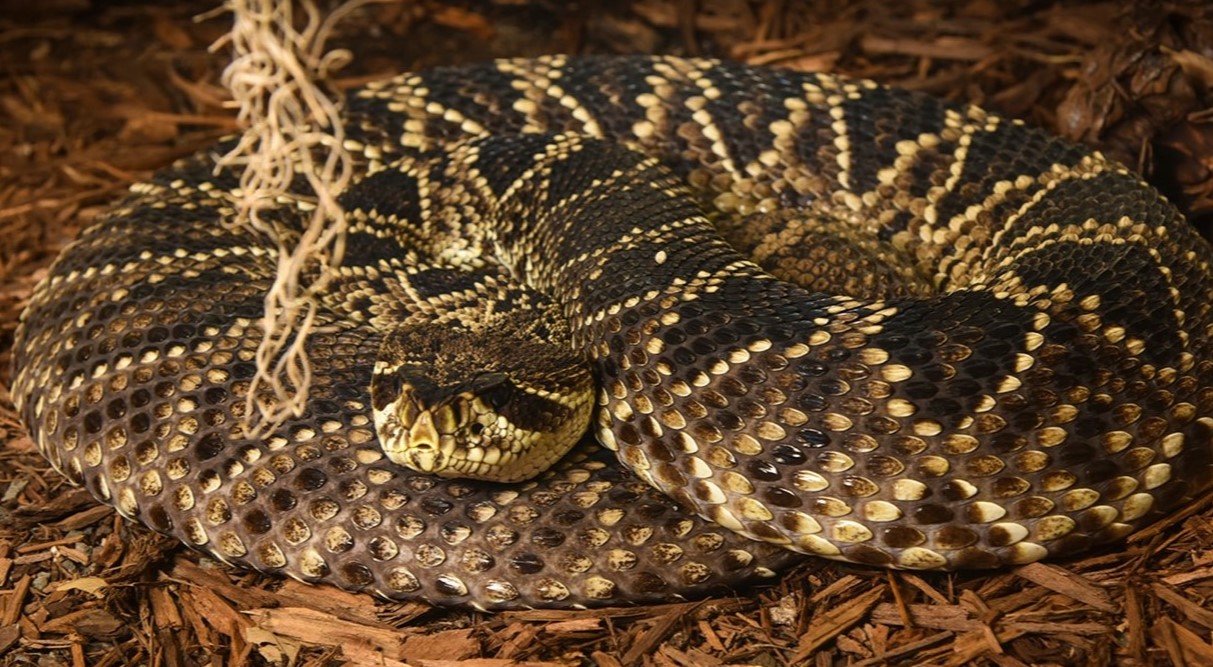
The Eastern Diamondback Rattlesnake is a fascinating creature that has captured the curiosity of animal enthusiasts and researchers alike. As one of the largest venomous snakes in North America, it has earned a reputation as both a formidable predator and a crucial member of the ecosystem. With its distinct diamond-shaped patterning and unmistakable rattling sound, the Eastern Diamondback Rattlesnake has become an iconic symbol of the American wilderness. In this article, we will delve into 15 intriguing facts about this remarkable species, from its impressive size and venomous capabilities to its unique adaptations and ecological importance. So, get ready to explore the world of the Eastern Diamondback Rattlesnake and uncover some surprising secrets about this extraordinary reptile.
Key Takeaways:
- The Eastern Diamondback Rattlesnake is the largest venomous snake in North America, with a potent venom and a loud warning rattle, playing a crucial role in maintaining ecological balance.
- These snakes have unique adaptations, such as viviparous reproduction and heat-sensing pit organs, and their venom is being studied for potential medicinal uses. However, they face conservation threats.
A Venomous Species
The Eastern Diamondback Rattlesnake is a highly venomous species found primarily in the southeastern United States.
Largest Venomous Snake in North America
The Eastern Diamondback Rattlesnake holds the title for being the largest venomous snake in North America. Adults can reach lengths of up to 8 feet (2.4 meters)!
Dangerous Rattle
Their signature rattling sound is created by the overlapping segments on their tails, known as “rattles”. The rattle is a warning sign for potential predators to stay away.
Potent Venom
The venom of the Eastern Diamondback Rattlesnake is highly toxic and can cause severe tissue damage, internal bleeding, and in some cases, even death.
Eagle-Eyed Predators
Despite their reputation as ambush predators, Eastern Diamondback Rattlesnakes have excellent vision. They can accurately strike their prey from a distance of up to two-thirds of their body length.
Adaptation for Survival
Their distinct diamond-shaped patterns provide effective camouflage in their natural habitats, which include pine forests, marshes, and sandy dunes.
Surviving in Harsh Conditions
Eastern Diamondback Rattlesnakes are expert survivors and can tolerate extreme temperatures, from freezing winters to scorching summers.
Sluggish Digestion
After consuming a large meal, these snakes may not eat again for several months. The digestion process can take a while, often requiring them to bask in the sun to speed up metabolic activity.
Viviparous Reproduction
Unlike most snakes, Eastern Diamondback Rattlesnakes are viviparous, meaning they give birth to live young instead of laying eggs. The average litter size can range from 7 to 21 offspring.
Important Ecological Role
As apex predators, Eastern Diamondback Rattlesnakes play a crucial role in regulating prey populations, helping to maintain an ecological balance in their ecosystems.
Long Lifespan
Eastern Diamondback Rattlesnakes have relatively long lifespans, with some individuals living up to 20 years in the wild.
Loud and Clear Warning
The rattle of an Eastern Diamondback Rattlesnake can be heard from a distance of up to 50 feet (15 meters) – a clear signal to steer clear!
Pit Organ Sensitivity
Eastern Diamondback Rattlesnakes possess specialized heat-sensing organs, known as pit organs, located on each side of their heads. These organs help them detect warm-blooded prey in the dark.
Important Role in Medical Research
The venom of Eastern Diamondback Rattlesnakes has been studied extensively for its potential medicinal properties, including uses in pain relief and anti-cancer treatments.
Conservation Concerns
Despite their ecological importance, Eastern Diamondback Rattlesnakes face numerous threats, including habitat loss, road mortality, and illegal collection for the exotic pet trade.
These “15 Intriguing Facts About Eastern Diamondback Rattlesnake” demonstrate the fascinating characteristics and significance of this unique species. From their venomous nature to their important role in the ecosystem, Eastern Diamondback Rattlesnakes continue to captivate the imagination of snake enthusiasts and researchers alike.
Conclusion
In conclusion, the Eastern Diamondback Rattlesnake is a truly fascinating creature with a rich history and unique characteristics. From its iconic rattling sound to its potent venom, this snake has earned its reputation as one of the most formidable reptiles in North America. Its striking diamond-shaped pattern and impressive size make it a sight to behold in its natural habitat.Despite its fearsome reputation, the Eastern Diamondback Rattlesnake plays an important role in the ecosystem as a predator, helping to regulate populations of small mammals and maintaining balance in the food chain. However, it is crucial to exercise caution and respect when encountering this snake in the wild, as its venomous bite can be dangerous.By learning more about this remarkable species and promoting conservation efforts, we can appreciate the Eastern Diamondback Rattlesnake for its ecological significance and ensure its long-term survival. Let us continue to marvel at the wonders of nature and protect these incredible creatures for generations to come.
FAQs
1. Are Eastern Diamondback Rattlesnakes endangered?
No, as of now, the Eastern Diamondback Rattlesnake is listed as a threatened species but not yet classified as endangered. However, its population has significantly declined due to habitat loss and hunting.
2. How venomous is the Eastern Diamondback Rattlesnake?
The Eastern Diamondback Rattlesnake possesses a potent venom that is capable of causing severe damage. Its venom is primarily used to immobilize and digest its prey, such as small mammals and birds.
3. Can the Eastern Diamondback Rattlesnake be found outside of the eastern United States?
No, the Eastern Diamondback Rattlesnake is primarily found in the southeastern United States, including states like Florida, Georgia, Alabama, and Mississippi.
4. How long can an Eastern Diamondback Rattlesnake grow?
Eastern Diamondback Rattlesnakes are one of the largest species of venomous snakes in North America. They can reach lengths of up to 7 feet or more.
5. What should I do if I encounter an Eastern Diamondback Rattlesnake?
If you encounter an Eastern Diamondback Rattlesnake, the best course of action is to keep your distance and slowly back away. These snakes will typically try to avoid human contact, but if provoked or cornered, they may become defensive. It is important to give them space and respect their natural habitat.
6. Can the Eastern Diamondback Rattlesnake be kept as a pet?
It is generally not recommended to keep Eastern Diamondback Rattlesnakes as pets. They require specialized care, a suitable and secure enclosure, and proper permits due to their protected status. It is best to appreciate them from a safe distance in their natural environment.
Was this page helpful?
Our commitment to delivering trustworthy and engaging content is at the heart of what we do. Each fact on our site is contributed by real users like you, bringing a wealth of diverse insights and information. To ensure the highest standards of accuracy and reliability, our dedicated editors meticulously review each submission. This process guarantees that the facts we share are not only fascinating but also credible. Trust in our commitment to quality and authenticity as you explore and learn with us.


